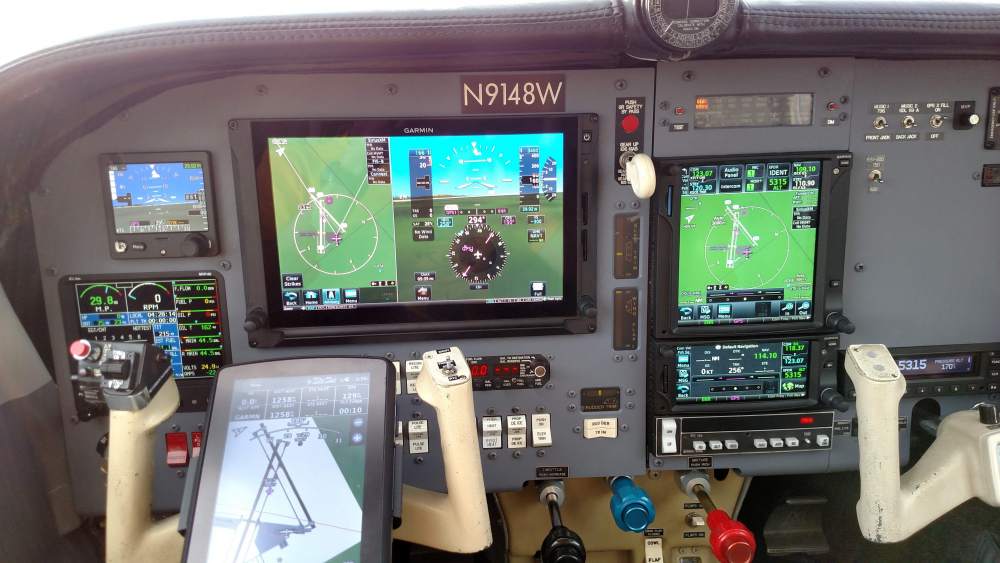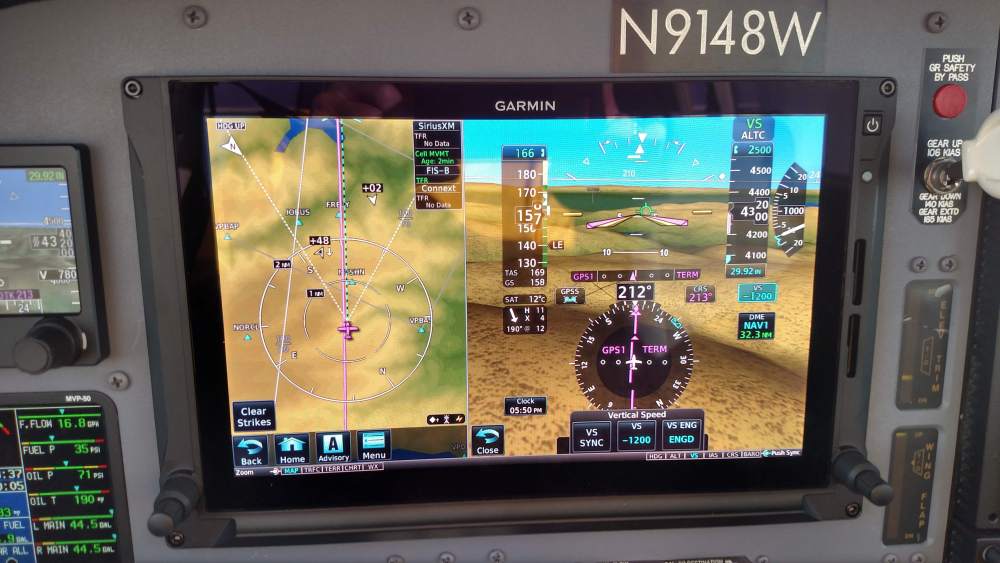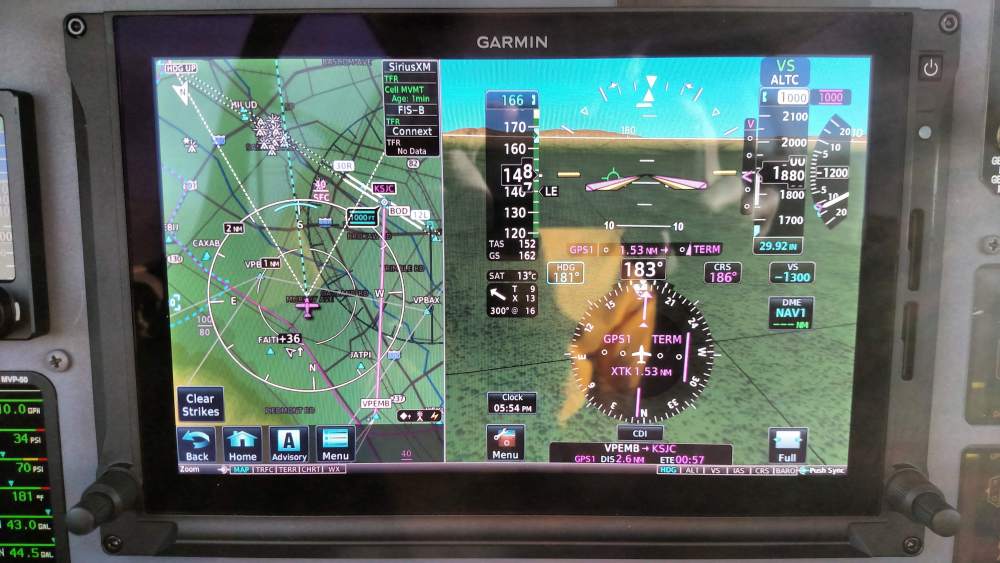-
Posts
2,726 -
Joined
-
Last visited
-
Days Won
38
Content Type
Profiles
Forums
Blogs
Gallery
Downloads
Events
Store
Everything posted by donkaye, MCFI
-
Fell off the front jack.
-
Yes, it fell off the front jack, probably inspecting the donuts. Luckily, I have an instrument student tomorrow morning and I get to choose where we go. We're going over to Stockton to practice.
-
I will probably go with a Reman. Not sure what the backlog is. Definitely don't want my current engine torn down and rebuilt. I don't trust any shop to do that. I want an original Lycoming, period.
-
Thank you for the idea! I'll call them tomorrow.
-
Dr. Bob Achtel, a very good friend of mine once quoted someone else that "an Annual is a time where you take in a perfectly good airplane and get one back that doesn't work". Today was that day. While accidents do happen, why did it have to be my airplane??? While I didn't get the full story, sufficed it to say that while doing the inspection, the nose of the airplane was dropped. Several blades of the prop were bent and the nose truss was destroyed. I was informed that the engine is a tear down. Looks like several months before it is back together again. Out the window goes our trip to Don Maxwell's event. There may be an upside. I'm considering a new engine. I don't want a tear down and rebuild. Definitely a new prop. But no airplane for months!!!
- 229 replies
-
- 14
-

-

Option that KFC 150 is fried
donkaye, MCFI replied to thomas1142's topic in Avionics/Panel Discussion
One thing is pretty certain. Garmin can be depended upon to certify the GFC 500 for the Mooney for many models. They've had a Bravo since July that they are using to certify it. It is expected to be completed by the end of the year. With the new VNAV capability of the GTN 750 only the GFC 500/GFC 600 will be able to couple VNAV. Wait till that unit is certified and fly without an AP for a few months if you can't find a KC192 for a reasonable price. -
Looking at the specs for the 4587 taxi light and the 4596 main light, the taxi light has a 10°x30° spread while the main light has a 10°x10° spread. This spreads the taxi light. I just bought the taxi light because it was called a taxi light. If I had it to do all over again I would buy 4 1030-4596 to get a brighter long range taxi light. The spread isn't all that important to me.
-
Thanks for the information, Dave. After saying once again that I'm done upgrading the upgrade of the upgrade of my panel, I sending my unit in for the new display upgrade. So now I'll have an upgrade to the upgrade to the upgrade.
-

Soft Field Procedure in a Long Body
donkaye, MCFI replied to Chris K's topic in Modern Mooney Discussion
For the long body, have a good reserve set up for your tank reseal after bouncing around on the grass. Short field (>2,300 feet), yes, soft field for me, NO. The year following my bouncing around on the grass at Oshkosh, I had to have the tanks resealed. -

A Surprise with the G500 TXi
donkaye, MCFI replied to donkaye, MCFI's topic in Avionics/Panel Discussion
I did the major upgrade at the end of 2013 with the project done in March of 2014. At the time of purchase of the products, Garmin had some pretty good rebates. Then there were some more by attending some seminars at Oshkosh. EI also had Oshkosh rebates and I got a good deal on the original ESI 2000. Then the Avionics shop gave me some more discounts as a result of installing all of the products that I installed. Over a couple of months period of time I got almost 25% of the cost back in sales of my legacy equipment. A couple of years later I upgraded the ESI 2000 to the ESI 500 because it had NAV and I upgraded the GTX 330ES to the GTX 335 because I didn't like the green display of the 330ES. I added the AOA and then in June upgraded the G500 to the G500 TXi because of the Garmin rebate. So I have top of the line state of the art avionics in a pretty fast airplane. Except for lack of pressurization, I'd rather have what I have than a used TBM with nowhere near the equipment capability. It's really not that much slower, and I don't intend to fly in weather that would require turbines with their associated maintenance costs. Netted out, the cost was quite a bit less than the $100K stated above, but the products obviously cost more than that. I made good use of rebates. Regarding the Aera 796, I've had every Garmin handheld with the exception of the 196. I started out with the original GPS 90 many years ago. I use the 796 extensively in my flight instruction to normalize airplanes with various avionics packages. I can go anywhere with it and have weather, and I have. In my own plane I use the map page a lot with two rows of information. I really use the weather icon because I can show individual XM information quickly. It bluetooths to the GDL 88 for FIS-B weather and traffic (including correlated Active Traffic), the GDL 69A for XM weather and music, and the GTN 750 for flight plans and as a pass though from the G500 TXi for ADHRS. There's so much more to it that I use in addition to all my panel stuff, but there's not enough space or time to review it here. Suffice to say it just adds to the overall panel mounts. Yes, I'm fortunate that other events in my life have enabled me to have this great equipment and to devote much of my time to flying and teaching. -

A Surprise with the G500 TXi
donkaye, MCFI replied to donkaye, MCFI's topic in Avionics/Panel Discussion
My 796 goes with me everywhere including my own airplane. Garmin didn't miss anything on the panel. I just find that I can get to some things much faster than playing with the panel mounted control knobs, i.e., individual weather products, AOPA airport information, Jeppesen approach Charts that I use as my primary source for charts (would have to pay $4,300 to get them on the 750 and G500 TXi). And don't forget an additional source of XM weather and music, and a backup attitude indicator. The 796 is waaay too underrated. It's so much better than an iPad, which I do have as a backup to the backup. -

A Surprise with the G500 TXi
donkaye, MCFI replied to donkaye, MCFI's topic in Avionics/Panel Discussion
The trim was centered. It was me trying to get the correct photo position and hitting the rudder peddle in the process. I'll have to watch out for that in the future. Good catch. I hadn't noticed that before. -
Stormscope is immediate, XM and FIS-B is delayed. I wouldn't want to go cross country without one. I'd recommend biting the bullet and either replacing it with a used one or getting it repaired. I'd even considering buying a new one at $4,500, getting the warranty, and selling your broken one to someone else who would get it repaired.
-

A Surprise with the G500 TXi
donkaye, MCFI replied to donkaye, MCFI's topic in Avionics/Panel Discussion
Yes, for the update---called 7.3. I scanned through the new G500 manual. Has the new VNAV symbols used in conjunction with the GTN update. Has CDI/VDI preview. Does not have the Arc VDI. Does not have Density Altitude as a menu item. Does not have Temperature Compensation for minimums for approaches. Time to upgrade to the TXi? -
To Oregon 87 from EI: I have the MVP-50 and love it. The extra screens compared to the JPI 930 made it a no brainer when I investigated which one to put in my plane. However, it's CHT readings are about 50° cooler than when I had the JPI 700. Originally I thought that was great, but is it for real? Would you recommend putting the fire sleeving on all CHT probes? I'm thinking about doing it at Annual this year? Thanks for monitoring this list.
-

Does an F Nose Bounce more than a C?
donkaye, MCFI replied to MBDiagMan's topic in Vintage Mooneys (pre-J models)
I cringe when I hear someone say, "chop the power". Airplanes in non aerobatic flight should be flown gently--with grace. Make your passengers WANT to fly with you again, not run away from you. If your speed was correct on final then the power should be "WITHDRAWN" at the same rate that you raise the nose in the flare. Never EVER, EVER push the nose forward to keep the nose on the ground after landing. This will lead to a porpoise and potential prop strike. At the time you cross the threshold your landing distance has already been determined, so it's a good idea to have the crossing speed correct. Trying to force the airplane to land when it doesn't want to is folly and a good way to hurt both yourself and your airplane. As Wayne Fisher once said, "Remember, we make good landings when we want to fly and the airplane wants to land, and we make bad landings when we want to land and the airplane wants to fly!" http://www.donkaye.com/donkaye.com/Wayne_Fisher_on_Landings.html http://www.donkaye.com/donkaye.com/Perfect_Your_Landings.html -
In reading the manual for the latest update to the G500 TXi I came across something that hasn't been promoted, something that I had wished Garmin would add but I had never asked about it. They now give an option for an Arc VSI. I rushed over to my Avionics shop today (the change is not user selectable) and had them change the setting. The result is shown in the pictures. One of the pictures is without VNAV and the other shows the VNAV descent into San Jose. The large descent rate required was due to the East Bay Hills. The VNAV on vertical Glideslope indicator and VNAV required rate are clearly shown. I set up the VNAV to arrive at SJC at 1,000 feet MSL. I also had the chance to try out the CDI Preview. It is really slick. I ran the full ILS Approach into Stockton with the holding pattern in lieu of a PT. All was done in GPSS mode until established on final. The preview of the ILS showed up on both the CDI and the Glideslope indicator in gray while the active GPSS had the standard color. Leave it to Garmin to come up with another really great update for both the G500 and GTNs. I'm still learning how to most effectively use the new VNAV.
-
"Taking off is optional. Landing is mandatory." I don't remember the airport, Victor, but I do remember the statement from our trip on the "Down Under Tour", one windy day. Fond memories... Anyway, I loved my KLN 90B and used it for over 20 years. I still think it is one of the best non WAAS GPSs out there. I remember I sold mine for about $1,000 when I did my upgrade 4 years ago. They are a bargain, and I highly recommend it for the short term. WAAS, OTOH, is the cats meow. Garmin's new system upgrade just makes an already great product (the GTN 750) so much better! When combined with the system update for the G500 TXi, I can't imagine how it can get any better...but I'm sure Garmin will find a way. The new VSI indicator has been long in coming, but what a surprise!
-

Experienced my first spin yesterday
donkaye, MCFI replied to rbridges's topic in General Mooney Talk
I do see a benefit of teaching stalls, but not accelerated stalls in the Mooney. You are just about guaranteed to go into a spin if you accelerate into the stall. Gently approaching the stall from my experience will show the tendency of the plane to drop off on a wing. At the burble, if the plane is not rigged just perfectly one wing will start to go over. At this point it is easy to recover. From this experiment you will know that it is not a good idea to go to the stall in your landing. I've had students whose plane had a tendency to drop a wing do the same just before touchdown and when they had misjudged their height above the runway. I've never had a wing hit the ground, but once did come close. All the new planes pretty much stall straight ahead. Some of the older ones don't. For those that don't it's a good idea to get to your friendly Mooney Service Center and get the plane re-rigged. BTW, when calibrating an AOA, you need to go to the stall to be able to setup the donut for 1.3 Vso. -

Experienced my first spin yesterday
donkaye, MCFI replied to rbridges's topic in General Mooney Talk
I thought this was interesting. Tough to get through the whole performance. One might want to rethink becoming an Airshow Performer. -
Without judging I'd like to share a couple of observations and make a comment: 1. Pilot owned aircraft since April of this year. No known Mooney checkout. 2. Palo Alto has a short runway. (2443 feet) 3. I've attached a rough but I believe reasonably close to accurate Weight and Balance after finding out both passengers were in the back seat. 4. Appears to have stalled on go around after a too fast approach. Recommendation to all in unusual loading situations: Do a Weight and Balance and adjust if necessary to the result.
-
I just got the update last week, but I think it's under Systems > Keyboard, but I'd have to check again.
-

Foreflight Mooney Bravo Service Ceiling Error Corrected
donkaye, MCFI replied to alextstone's topic in Mooney Bravo Owners
To answer the question in a different way. Down low the Ovation is quite a bit faster than the Bravo, This is to be expected, since it has a minimum of 10 extra horsepower and with the 310 HP conversion 40 more HP. Yesterday I flew with a student a 5,500 feet and the Ovation was 20 knots faster at 180 knots than mine at 160 knots, both at 75% power. Up high is a different matter. At 17K, I'll often true out at 200 knots; at 15K about 190 knots. This is close to the 2% rule of thumb increase in TAS for each 1,000 feet of altitude. -
Version 6.5 gives 3 easily modifiable options; Querty, ABC, and the old method.
-

Foreflight Mooney Bravo Service Ceiling Error Corrected
donkaye, MCFI replied to alextstone's topic in Mooney Bravo Owners
Bravo: Key number 53 or 29"/2400rpm for 75% power. Maximum power setting I would EVER consider flying into the wind for a short time is 31"/2400rpm. Fuel flow at 75% power is about 18 gal/hr. Fly LOP at your own risk. Expect engine and exhaust system issues if you do. Some have gotten the Bravo engine to run LOP successfully; most have not and I am one of them. I do have and recommend the GAMI injectors. I fly mostly 15K to 18K. I don't like the flight levels; O2 mask is uncomfortable and over all not a good environment for the human body unpressurized. Been there, done that. I plan my flights so I don't have to go there. No matter how well you run your engine, preemptively overhaul the turbo, waste gate and controller at engine midtime. Failure to do so will most certainly involve doing it at a time NOT of your choosing. I love the Bravo and have upgraded it to the max (without TKS). Owner for 26 years and nearing the time I will buy my 2nd reman engine (3rd engine).








